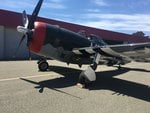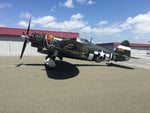Glider
Major
To all intents and purposes the P40 didn't operate from the UK over German held territory. A number of UK based squadrons were equipped with P40 in the low level tactical recce role and some squadrons did fly a few missions and then stopped until equipped with either Mustangs or Recce Spits, but most squadrons didn't fly any offensive missions until reequipped, as the P40 wasn't up to the job.Wow , didn't know p40s were ever flow out of Britain. On sweeps across the channel or otherwise.Thanks for the new info.
Just to add to the p40s in Europe theme here, there were 3 RAAF units still equipped partially or completely with P40s up until VE day. The 450th RAAF was the unit that flew p40s in front line service out of the northern tip of Italy( can't remember the name of the town right now) wirhin range of Berlin, right up until the end.
Examples include 239 squadron which was equipped with P40's and hurricanes but didn't start offensive missions until 1942 when it was equipped with Mustangs. Some missions were flown over the North Sea to look for downed pilots.
I am not aware of any offensive sweeps being flown by P40's. If they did, it was probably similar to the P39, a handful of missions before it was stopped. 26 squadron were possible contenders, as they did start to fly missions in October 1941 but there were replaced by Mustangs by Jan 1942


